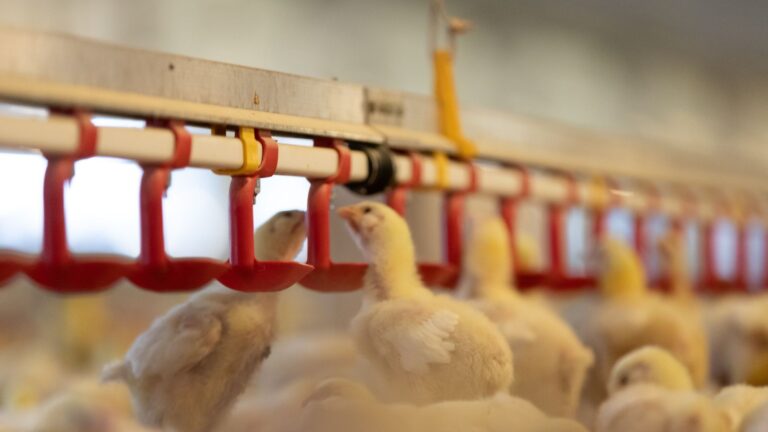Consumers are taking more interest in the provenance of their food, and retailers including Waitrose and Marks & Spencer, and quick service restaurant chains including KFC, have signed up to the Better Chicken Commitment (BCC).
This change in production system means producers will face new challenges and will potentially have to seek out other opportunities to remain profitable.
See also: CIWF report criticises partial adoption of Better Chicken Commitment among UK firms
Transitioning to a system with a lower stocking density, like the BCC, could result in increased demand for resources, such as feed, water, energy and land, which will have a direct effect on the industry’s environmental impact.
According to a recent report by the Association of Poultry Processors and Poultry Trade in the EU countries (AVEC), transitioning to the similar European Chicken Commitment results in a 35.4% increase in water consumption, 35.5% jump in feed consumption and 24.4% more greenhouse gas emissions per kilogram of meat.
The ECC and BCC commit its signatories to apply several requirements, such as the use of slower-growing chicken breeds, a lower stocking density, and the use of enrichment tools, to 100% of their fresh, frozen and processed poultry supply chain by 2026. For many producers the transition has already happened and many more are in the process of changing to the new system.
In its report, AVEC said these effects on production would inevitably lead to higher prices that could exclude a large proportion of consumers from buying chickenmeat or drastically increase imports from third countries with lower animal welfare standards.
Balancing act
For many producers, welfare and efficiency are equally important, so there is a need to weigh up how producers can meet these different expectations; it’s a balancing act.
Adopting new technologies could play a huge role in supporting producers to reduce the potential loss in efficiency caused by moving to slower-growing birds while maintaining a higher degree of welfare.
With the introduction of more intelligent in-house monitoring systems, it’s now possible to monitor the birds and the conditions in the shed in real time, providing constant data on health and performance.
SenseHub Poultry’s wireless sensors allow for continuous, real-time monitoring of key parameters like temperature, humidity, carbon dioxide, water intake and weight gain.
Although there is no replacement for an experienced stockman going into the shed, this level of detailed data collection can provide workers with real-time insights to empower them to make more informed management decisions.
Pattern deviation
By analysing data trends, producers can spot any deviations from the expected pattern that could indicate an emerging health issue or production problem early on, allowing for immediate intervention.
For example, sensors may detect a drop in water and feed intake before visible clinical signs of disease appear, allowing pre-emptive treatment.
In addition, it allows producers to identify problems within the housed environment. For example, hot or cold spots could be identified, allowing producers to proactively address issues like heat stress or chilling in birds.
Embracing technology during the transition to the BCC could help to retain producer profitability and reduce environmental impact to find a happy medium.


